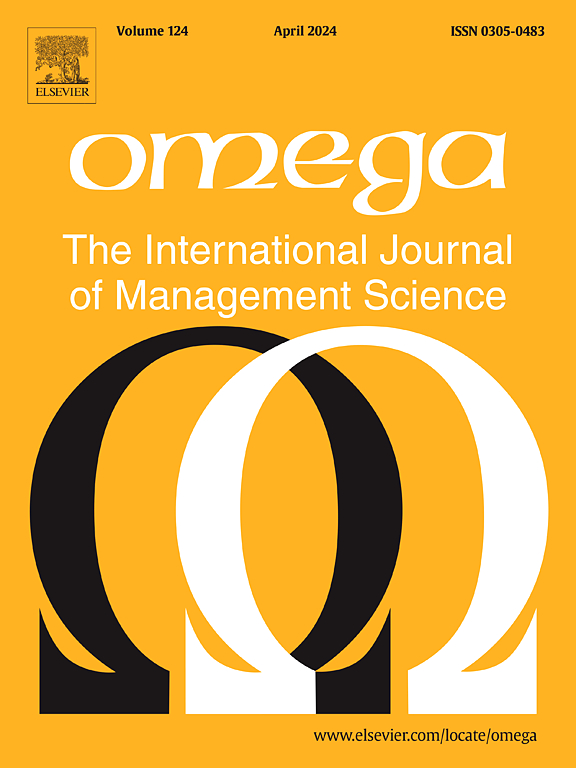Trendsetting in conspicuous consumption: The impact of a resale market
IF 7.2
2区 管理学
Q1 MANAGEMENT
Omega-international Journal of Management Science
Pub Date : 2025-09-03
DOI:10.1016/j.omega.2025.103418
引用次数: 0
Abstract
Social influence, such as snobbish and conformity effects, is believed to play a fundamental role in conspicuous consumption. The rapidly growing market for second-hand luxury products, particularly in the form of consumer-to-consumer (C2C) resale, presents a new opportunity for the conspicuous goods industry. To evaluate the impact of the C2C resale market on conspicuous consumption, we develop a monopoly model over two usage periods, where two types of conspicuous consumers can trade used products on the resale market. We first examine the implications of social influence on conspicuous goods, providing insights into how such products are priced. Then the impact of the C2C resale market on luxury market performance is explored. Interestingly, we find that it prompts different strategic behaviors among snobs and conformists, generating the “trendsetting-following effect.” Furthermore, social externalities within the conspicuous framework amplify the value enhancement effect and mitigate the cannibalization effect of secondary markets on the retailer, ultimately driving market expansion and boosting the retailer’s profit. Although the presence of a secondary market lowers the retail price in the primary market, it increases the retailer’s profit under certain conditions, while it always boosts consumer surplus and social welfare, resulting in a win-win-win situation for consumers, the retailer, and society.
炫耀性消费的潮流引领:转售市场的影响
社会影响,如势利和从众效应,被认为在炫耀性消费中起着根本作用。快速增长的二手奢侈品市场,特别是消费者对消费者(C2C)转售形式,为炫耀性商品行业带来了新的机遇。为了评估C2C转售市场对炫耀性消费的影响,我们建立了一个两个使用周期的垄断模型,其中两种类型的炫耀性消费者可以在转售市场上交易二手产品。我们首先研究了社会影响对炫耀性商品的影响,提供了这些产品如何定价的见解。然后探讨C2C转售市场对奢侈品市场表现的影响。有趣的是,我们发现它在势利者和墨守成规者之间促进了不同的战略行为,产生了“跟风效应”。此外,显著性框架内的社会外部性放大了价值提升效应,减轻了二级市场对零售商的蚕食效应,最终推动了市场扩张,提高了零售商的利润。二级市场的存在虽然降低了一级市场的零售价格,但在一定条件下增加了零售商的利润,同时也增加了消费者剩余和社会福利,最终达到消费者、零售商和社会的三赢局面。
本文章由计算机程序翻译,如有差异,请以英文原文为准。
求助全文
约1分钟内获得全文
求助全文
来源期刊

Omega-international Journal of Management Science
管理科学-运筹学与管理科学
CiteScore
13.80
自引率
11.60%
发文量
130
审稿时长
56 days
期刊介绍:
Omega reports on developments in management, including the latest research results and applications. Original contributions and review articles describe the state of the art in specific fields or functions of management, while there are shorter critical assessments of particular management techniques. Other features of the journal are the "Memoranda" section for short communications and "Feedback", a correspondence column. Omega is both stimulating reading and an important source for practising managers, specialists in management services, operational research workers and management scientists, management consultants, academics, students and research personnel throughout the world. The material published is of high quality and relevance, written in a manner which makes it accessible to all of this wide-ranging readership. Preference will be given to papers with implications to the practice of management. Submissions of purely theoretical papers are discouraged. The review of material for publication in the journal reflects this aim.
 求助内容:
求助内容: 应助结果提醒方式:
应助结果提醒方式:


